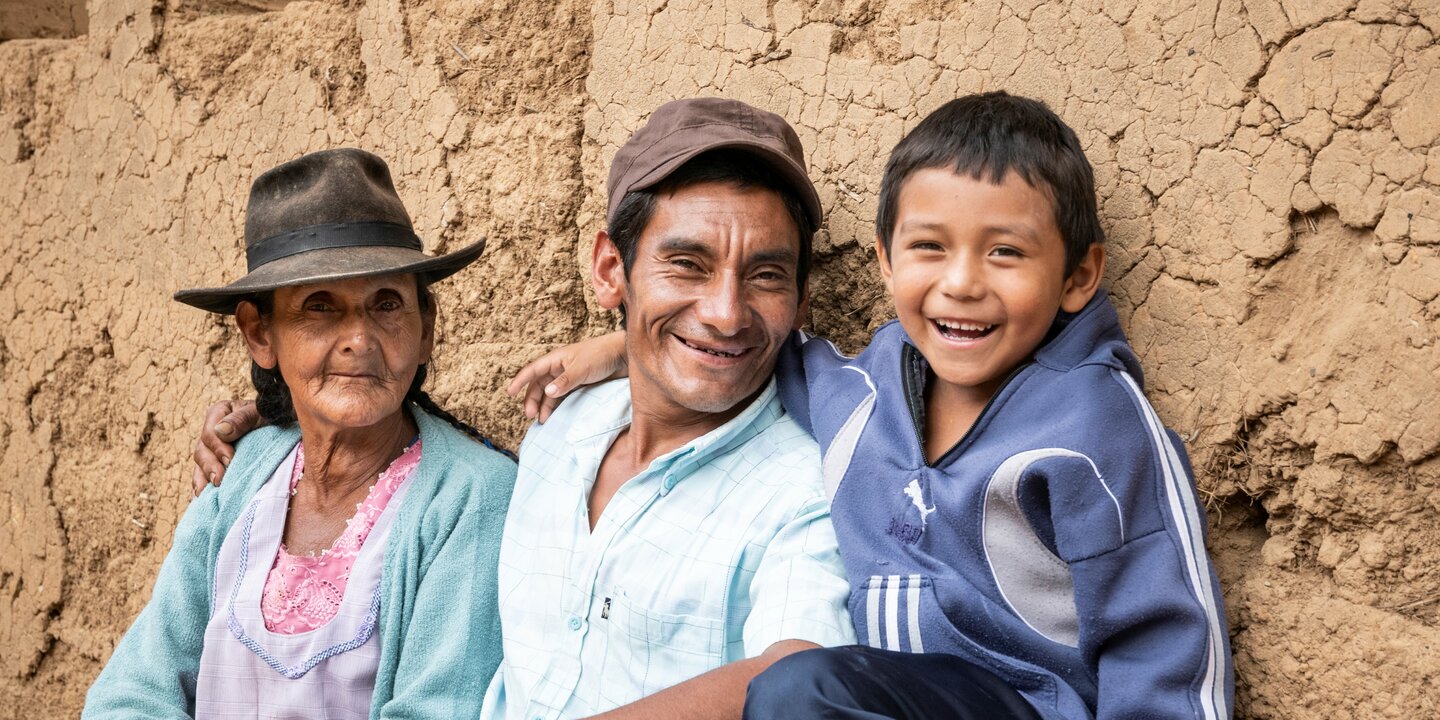It is now over two years since the homes of many Melamchi valley people were reduced to rubble, or at least rendered uninhabitable. Last week I had the opportunity to meet some of these people individually, and to discuss with our locally based team the progress made in recovery efforts.
Strong collaboration with Solidar and Caritas
A first impression of the valley is, by and large, of a return to normality. The paddy fields at this time of year are lushly verdant, and on the higher slopes, maize is also greening the fields. In Melamchi town, shops are doing brisk business and most rubble from destroyed buildings has been cleared away. Yet it is in the remoter parts of the valley that a return to normality has often been particularly difficult – and as reported in earlier blogs, our team has faced many challenges in reconstruction efforts. “Our team” in this context comprises not only Helvetas staff, but also staff of Solidar Switzerland and of Caritas, working together in complementary roles. Thus Helvetas and Solidar are collaborating on the project REAP on house reconstruction, domestic drinking water supplies and sanitation. Caritas is leading on the reconstruction of schools, for which Helvetas is responsible for the provision of water supplies. Additional Helvetas support for agricultural improvements is being provided through the project Rehabilitation of Agriculture Livelihood Project (ReAL).
Coordinating with government authorities
The team has taken care to adhere to both local and national government processes and guidelines. A particular difficulty in this respect has been with the allocation of the promised government compensation of NRs 300,000 (approx. CHF 3,000) to each household that lost their home. Although Helvetas/Solidar have committed to fully fund the reconstruction of 781 homes in Melamchi, government disbursement procedures nevertheless apply. Thus a first instalment of NRs 50,000 (approx. CHF 500) was given to commence rebuilding, with additional instalments only being allowed after inspection by government engineers to ensure that the construction is in line with earthquake resistant practices. The logic of this is perfectly understandable; unfortunately, however, it takes time for engineers to do these checks, and in the meanwhile the would-be house owners have often taken loans to proceed with construction. With local interest rates being of the order of 2-3% per month, or 24 – 36% per annum, it is understandable that delays lead to frustration. Those Melamchi residents with private means have often gone ahead and rebuilt themselves. Meanwhile, the poorer households, including those supported by Helvetas/Solidar, have had to wait.
Local elections held on 14 May have given hope that government procedures will finally speed up. Melamchi now has a cadre of elected representatives for the first time in 15 years (the last local elections were held in 1997, the mandate of those elected expiring in 2002). They are aware that progress with earthquake reconstruction will be a key issue in local judgements of their performance.
Optimal building materials
Another major factor that contributed to early delays in rebuilding was the blockade at the Indian border, preventing the import of essential materials. There are no shortages of building materials now, but there has been much discussion over what is best. Since timber is affordable and locally available, Helvetas/Solidar have supported the use of timber for the horizontal reinforcement of walls (see picture), as also recommended by the National Reconstruction Authority and the Department of Urban Development and Building Construction (DUDBC). However, some local officials have called for the use of concrete reinforcement, believing it to be better; it is also more expensive. Rebuilding a house within the budget of NRs 300,000 is challenging, but for poorer households, it is important to keep within this threshold.
Jobs for trained construction workers
Pemba Dorje Tamang, pictured here with his wife Ganga, was in Qatar when the earthquake occurred. Ganga was in the fields with one of their two small sons at the time; though they sustained cuts and bruises, they were otherwise unharmed – but their house, in the upland community of Kiul, was gone. As a woman with young children and an absent husband, Ganga was prioritised for shelter, but work only started once Pemba came home. He undertook a Helvetas/Solidar training on earthquake-resistant house construction, and with his existing knowledge of masonry, was able to lead the construction of his own house as well as that of others. One consequence of the high local demand for labour since the earthquake is that daily wages have done up. A Melamchi shopkeeper complained that earlier, a labourer would be happy with NRs 500 (CHF 5) a day, perhaps NRs 700 (CHF 7) for skilled labour. In just two years, the rates have jumped to NRs 1,000 (CHF 10) and NRs 1,200 (CHF 12), respectively. For people like Pemba, this is good news; he has no intention of returning to Qatar as he can now earn well locally.
Repaired and improved water supplies
Other reconstruction works, where there has been no need to wait for long approval processes, have been more rapid. Thus in Timbu, Maya Lama, president of the settlement’s drinking water users’ association, is full of praise and gratitude. The 51 households of Timbu now all have their own drinking water stand outside their home – a new development since the earthquake, and one that everyone, she says, appreciates. The water storage cistern is reinforced to withstand any future earth movements, and the distribution system was made large enough to allow for additional future connections if new houses are built. A notice board explains the system. Similarly, in Melamchi town, Ramesh Deuja, Secretary of the local water user’s committee, Melamchi-6, points to a gushing irrigation channel. It has been functioning for two seasons now thanks to the renovation work supported by Helvetas; those verdant paddy fields would be a lot less green without it.
Increasing momentum
Overall, there is a sense within our team of work gathering pace. Recently the 200th Melamchi home supported through REAP was completed. Although 584 remain, with 412 individuals now trained in earthquake-resistant construction, and newly elected representatives expressing strong support, there is reason for optimism.
In total, Helvetas has to date supported the rebuilding of 2,174 earthquake-destroyed homes through different mechanisms: on-site training in earthquake resilient construction; training of others by trained individuals; and (as in the case of the 200 Melamchi houses) training plus the full funding of materials.





